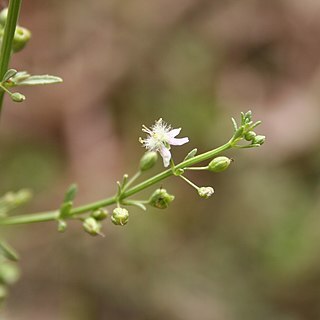Stamens 4, subequal, filaments filiform, anthers sagittate with divergent or parallel loculi.
Annual herb, or rarely small shrub, much branched, erect, glabrous or pubescent.
Corolla regular, rotate, 4-lobed, throat bearded; lobes obtuse, subequal.
Inflorescence raceme-like or flowers axillary, solitary or paired.
Style subclavate at apex, stigma truncate or emarginate.
Leaves opposite or verticillate, entire or dentate.
Calyx 4–5-lobed, lobes ovate to lanceolate.
Capsule globose or ovoid.
Seeds numerous, angular.

